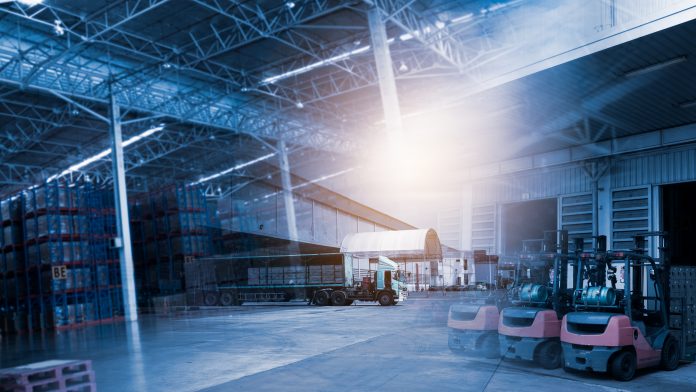Akash Gupta, Co-founder and CTO, GreyOrange, explores how AI can help solve the UK’s supply chain crisis as a result of lorry driver shortages, caused by Brexit and the pandemic
The UK is currently in the midst of a supply chain crisis. The combination of Brexit and the pandemic has led staff availability in the UK to fall since January 2021 at the quickest rate on record. This in turn has resulted in severe labour shortages which have left items previously taken for granted, such as bottled water, in short supply.
The worrying fact of the matter is that it is predicted to get worse before it gets better, with the Confederation for British Industry recently announcing that the UK should expect to see labour shortages continue for at least two years to come. So, what can retailers do about it?
The cause of the UK’s supply chain crisis
In short, the UK’s supply chain crisis is being caused by labour shortages across the sector, from HGV drivers to warehouse workers. Businesses in the UK have always battled labour shortages. In fact, The Open University’s Business Barometer in 2018 found that UK businesses spent £6.3 billion on temporary workers, recruitment fees and inflated salaries in order to overcome the lack of available labour in the country. These issues have since been exacerbated by Brexit and the pandemic, with it being noted by the London School of Economics (LSE) that UK businesses have struggled to maintain steady employment of workers during 2021.
The data from LSE estimates that as of the end of July 2021, the UK still had 1.9 million employees on furlough from approximately 580k businesses – many of which are businesses from within the industries reporting labour shortages. LSE’s data also highlights the role played by Brexit, with it being estimated that the number of EU nationals being employed in the UK fell from 2.4 million in January – March 2020, to 2.2 million in April to June 2021. With workers from Eastern European countries more commonly known to take up roles in those where there are now shortages, such as HGV drivers and warehouse workers, this exodus from the UK has undoubtedly contributed to the current crisis.
This data does point to Brexit as a factor in this shortage, but the aftershocks of the pandemic have had a significant impact on the workforce and is the determining factor behind the UK’s supply chain crisis. However, it could also be argued that a lack of digital transformation within the UK’s supply chain and fulfilment operations has also been a factor, with many businesses still reliant on inefficient human-oriented processes, particularly in their fulfilment centres.
How can AI & robotics help?
With Christmas fast on the horizon, and retailers warning of essential food items at risk of being unavailable this year, retailers desperately need to find a solution to labour shortages. This is imperative not only to fix the immediate crisis faced by the UK but also to mitigate similar crises from occurring in the future. So, how can AI and robotics help?
Put simply, AI-powered robots are able to pick up the slack in roles where there aren’t enough people available. A prime example of this can be seen by looking at fulfilment centres. In this instance, AI-powered robots can do the heavy lifting when people aren’t available, ensuring that business as usual can continue and products can be delivered on time.
Leveraging AI-powered robots in such a way makes the whole operation far more efficient and cost-effective than relying on people. For starters, robots do not need to take breaks, and can therefore be working continuously 24/7. This increases the efficiency of the operation by reducing fulfilment time by as much as 50%. Simultaneously, the operation becomes far more cost-effective as brands save money on labour costs. At GreyOrange for instance, we have seen retailers save as much as 33% on their fulfilment centre labour costs by implementing AI-powered robots.
Upskilling the workforce
At first, this may seem detrimental to humans, after all, it would appear robots are taking their jobs. This however is not the case, and actually investing in AI and robotics can have a positive effect on the human workforce, by augmenting their roles and responsibilities. By using AI and robotics to perform the low-value, repetitive, and often physically challenging tasks in a fulfilment centre, human employees can turn their attention to more specialist tasks that require human judgement.
At the Conservative Party conference, the Prime Minister set out his plans for a high skill, high productivity and high wage economy, which is a guarantee with the use of AI and robotics. By investing in these technologies, UK businesses can prepare for the future of work and support the future of the economy.
Humans and robots can work well side-by-side as well. For instance, by working alongside employees to detect potential assembly line defects, AI can aid productivity and subsequently enable employees to gain new-tech skills. Thus, instead of removing workers, businesses can leverage AI and robotics to upskill their existing employees, boosting their job satisfaction and giving them essential skills for the future.
Futureproofing Operations
By implementing AI and robotics in their fulfilment and supply chain operations to overcome the current labour crises, organisations’ can future-proof their organisation and build long-term resilience. Not only can AI-powered robotics help businesses to overcome their current challenges, but it can also help them to mitigate future crises while also cutting costs, boosting efficiency and upskilling the workforce.











